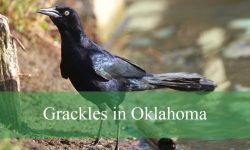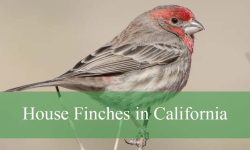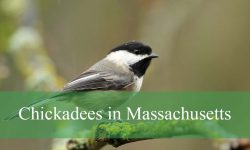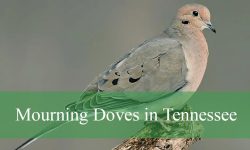Few birds stand out in Utah’s wide open landscapes as boldly as the magpie. Their glossy black and white feathers shimmer with hints of blue and green when sunlight hits them just right. Their bold presence stands out in open valleys, suburban neighborhoods, mountain foothills, and sagebrush plains. Many Utah residents see them every day without realizing how complex and intelligent these birds truly are.
These energetic birds are far more than noisy backyard visitors. Magpies interact with their surroundings in ways that reveal deep intelligence, remarkable adaptability, and a strong sense of social community. Their behaviors reflect a subtle understanding of the landscapes they inhabit. They learn from experience, cooperate with other birds, and adjust their daily activities to Utah’s shifting seasons.
This article uncovers what you didn’t know about magpies in Utah. Their intelligence, feeding strategies, nesting behaviors, social hierarchy, memory, and ecological importance reveal a bird far more fascinating than its familiar presence suggests.
Understanding Magpies in Utah
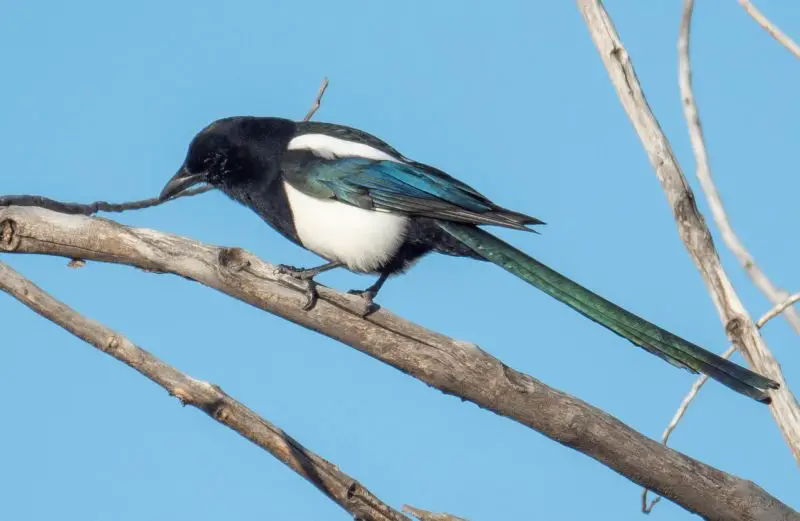
What Magpies Really Are
Magpies in Utah belong to the black billed magpie species, a member of the corvid family. Corvids include crows, ravens, and jays which are known for their advanced cognitive abilities. Magpies share many of those traits.
They have long tails, broad wings, and sharp bills that they use for foraging and intricate behaviors. Their plumage is a blend of deep black feathers and bright white patches that create an unmistakable silhouette across Utah’s open sky.
Why Utah Is Perfect Habitat for Magpies
Utah provides a mosaic of environments that magpies use throughout the year. Open grasslands, agricultural fields, canyon forests, and suburban yards all offer different feeding opportunities. The state’s climate supports diverse prey and plant matter.
Utah’s mix of seasons also works in their favor. Mild springs supply nesting materials. Hot summers bring abundant insects. Autumn yields seeds and fallen fruits. Winters challenge them but also offer opportunities to display their resilience and creativity in finding food.
Where Magpies Live Across the State
In Utah magpies appear everywhere. They perch on fence posts in agricultural zones. They walk boldly across picnic areas in city parks. They hop confidently in high elevation campgrounds. They patrol the edges of sagebrush flats and forage along riverbanks.
Their huge range in Utah reflects their flexibility and intelligence.
Hidden Behaviors You Never Knew
Their Memory Is Exceptional
Magpies remember faces, locations, and food sources with surprising accuracy. They recall where valuable feeding opportunities appeared. They remember which yards offer scraps or where insects gather during summer evenings.
Their memory helps them navigate challenging winters in Utah’s colder regions.
Their Curiosity Shapes Their Success
Magpies investigate anything new in their environment. A shiny object, an unfamiliar structure, or a new feeder draws immediate attention. Their curiosity helps them locate food sources and understand their surroundings.
Their Social Interactions Are Complex
Within groups magpies follow subtle social rules. Dominant birds feed first. Subordinates wait but remain within the group for protection and information. Their interactions include posture, calls, wing positions, and coordinated movements.
This complexity makes their flocks feel surprisingly organized.
Anatomy That Helps Them Thrive in Utah
Large Brains
Magpies possess relatively large brains compared to their body size. This enables problem solving, memory retention, and learning behaviors that rival some mammals.
Versatile Beaks
Their beaks handle seeds, insects, fruit, carrion, and cached food. They pry bark, dig shallow soil, and open containers.
Long Tails for Maneuvering
Their tail acts like a rudder that improves balance. It helps them navigate dense branches, wind currents, and sharp turns.
Strong Legs
Magpies walk comfortably on the ground. They hop between rocks and vegetation, searching for insects or seeds.
Feeding Habits of Utah Magpies
A Highly Diverse Diet
Magpies eat insects, small animals, seeds, grains, berries, carrion, and even food scraps in urban areas. Their ability to adjust their diet allows them to thrive in different seasons and landscapes.
Summer Insect Abundance
During summer magpies take advantage of Utah’s insect peak. They catch grasshoppers, beetles, moths, and spiders. Insects provide essential protein for growing young birds.
Autumn Wealth
Autumn brings seeds from grasses and shrubs, berries from chokecherries and junipers, and fruit from orchards. Magpies gather these seasonal foods in preparation for winter.
Winter Challenges
Winter presents the hardest conditions. Magpies forage for exposed seeds, insects under bark, or cached food saved earlier in the year. They follow predators to find leftover scraps from hunts.
Their creativity shines most during winter.
Magpies and Their Food Caching Behavior
Why They Cache
Caching food helps magpies survive unpredictable seasons. Utah’s winters range from mild stretches to sudden freezes. Stored food gives them stability.
How They Cache
They hide seeds, nuts, insects, and scraps in small holes across open ground or under vegetation. They memorize cache locations and recover them when needed.
Their Memory of Caches
Unlike some birds magpies do not rely on random searches. Their memory allows precise retrieval.
They also observe where other magpies cache food and sometimes attempt to steal it.
Nesting and Breeding Behavior
Constructing Remarkable Nests
Magpie nests are among the most elaborate of any North American bird. They build large domed structures with woven sticks and grasses. A roof covers the nest to protect it from weather and predators.
These nests may take weeks to complete. The interior includes soft lining such as fur, plant fibers, and grasses.
Nest Placement in Utah
Magpies choose trees, shrubs, or tall structures. They avoid overly exposed positions but prefer locations with good visibility of their surroundings.
Egg Laying and Chick Rearing
Females lay five to seven eggs on average. Both parents feed the young after hatching. Chicks grow rapidly and become vocal as they beg for food.
Young birds leave the nest after about a month but remain with the family group for weeks.
Extended Family Groups
Magpies maintain family bonds longer than many songbirds. Siblings stay together exploring food sources and learning from adults.
Magpie Social Structure and Communication
Family Centered Groups
Magpies form groups centered around extended families. These groups travel, feed, and defend areas cooperatively.
Vocal Complexity
Their calls range from chirps to chatters and multi toned notes. They communicate warnings, food discoveries, and location signals.
Visual Signals
Posture plays a role in communication. Raised tails, wing spreading, and body orientation convey dominance or alertness.
Group Coordination
Magpies move in surprisingly synchronized ways. When one bird spots an unusual object others follow quickly.
Magpies in Utah Ecosystems
Controlling Insect Populations
Magpies feed on large numbers of insects including grasshoppers and beetles. This reduces insect pressure in fields, gardens, and open habitats.
Seed Distribution
By eating seeds and moving across landscapes magpies help disperse plants. Some seeds pass through their digestion intact and germinate elsewhere.
Cleaning Scavenger Role
As scavengers they remove carrion from fields and roadsides. This helps maintain ecological cleanliness and nutrient cycling.
Supporting Predators
Magpies serve as prey for hawks, owls, coyotes, and bobcats especially young birds.
Magpies Across Utah’s Diverse Regions
Northern Utah
Open farmland and suburban areas support strong populations. Magpies perch on irrigation equipment, barns, and fence posts.
Central Valleys
Urban parks, orchards, and foothill trails create excellent habitat. Magpies combine natural foraging with suburban exploration.
Southern Utah
Magpies appear along river corridors, campgrounds, and juniper woodlands. Their presence is strongest where shade and water support food resources.
Mountain Regions
In summer magpies occupy high elevation meadows and forest edges. They follow camping areas where insects and food scraps appear.
Seasonal Rhythms in Utah Magpie Life
Spring
Nesting season begins. Pairs collect sticks and build domed nests. Calls increase as birds defend territories.
Summer
Fledglings learn to forage. Insects dominate diets. Magpies roam in loose family groups.
Autumn
Food caching peaks. Magpies form larger social groups and search widely for seeds and berries.
Winter
Daily survival becomes more difficult. Magpies rely heavily on memory, caching, and scavenging.
Interactions With Other Utah Wildlife
With Hawks
Magpies keep a close watch on hawks. They perform aerial maneuvers and alert calls when raptors approach.
With Songbirds
Magpies sometimes interact with sparrows, jays, and starlings. Their size gives them an advantage at feeding sites.
With Mammals
Magpies follow coyotes, deer, and livestock. They search for insects flushed from grass or feed on leftover pieces of fruit and seed.
With Owls
Magpies mob daytime roosting owls using loud calls and group pressure.
Myths and Misconceptions About Magpies
Myth: Magpies Are Only Urban Birds
They thrive in wild landscapes, not just suburbs.
Myth: Magpies Eat Only Scraps
They are versatile foragers that rely heavily on insects and natural foods.
Myth: Magpies Are Always Aggressive
Their social structure is cooperative and subtle.
Myth: Magpies Steal Shiny Objects Constantly
Curiosity drives picking up objects, but not all magpies do this.
The Long Term Outlook for Magpies in Utah
Stable Populations
Magpies remain abundant throughout the state. Their intelligence and adaptability protect them from many environmental pressures.
Changing Climate
Warmer winters and shifting precipitation patterns influence insect cycles. Magpies adjust quickly to these changes.
Impact of Urban Growth
Urbanization provides both challenges and opportunities. Magpies adjust easily to human modifications of the landscape.
Daily Life of a Utah Magpie
Morning
Magpies begin feeding early searching for insects, seeds, or cached food.
Midday
They rest in trees or shrubs. They preen feathers and watch their surroundings.
Afternoon
Flocks move across fields and yards in coordinated waves. They investigate potential food sources.
Evening
Calls soften. Magpies settle into group roosts where they remain alert but calm.
FAQs About Magpies in Utah
Are magpies common in Utah
Yes. They are widespread across valleys, foothills, and suburban regions.
What do they eat
Insects, seeds, fruit, carrion, and small prey.
Do they migrate
Most remain year round with minor seasonal movements.
Why do magpies chatter so much
They communicate constantly within family groups.
How long do magpies live
Many live five to eight years in the wild.
Do magpies build large nests
Yes. Their dome shaped nests are among the most complex in North America.
Why are magpies attracted to people
Curiosity, food sources, and environmental opportunity draw them near humans.
Conclusion
Magpies in Utah are far more remarkable than their everyday presence suggests. Their intelligence, seasonal adaptations, complex communication, and diverse feeding strategies make them one of the most fascinating birds in the state. They reveal how wildlife can thrive in landscapes that blend natural environments with human settlement.
Understanding their hidden lives deepens appreciation for Utah’s unique ecosystems. Whether perched on a fence post, gliding across open fields, or calling loudly from the top of a cottonwood tree, magpies bring energy and personality to every corner of the state.

